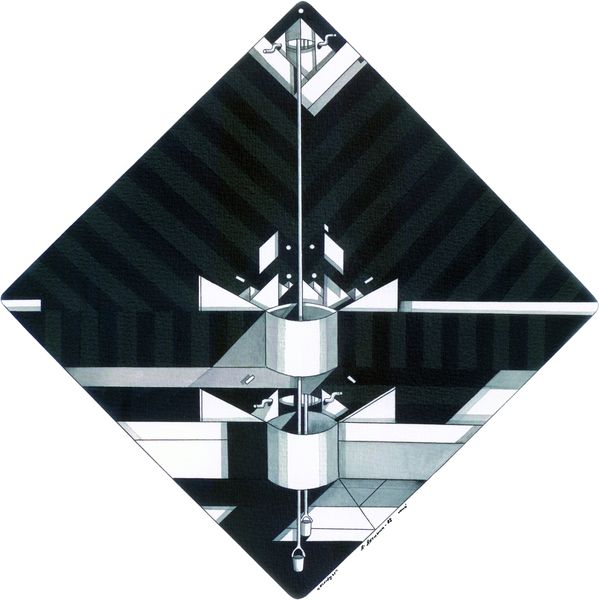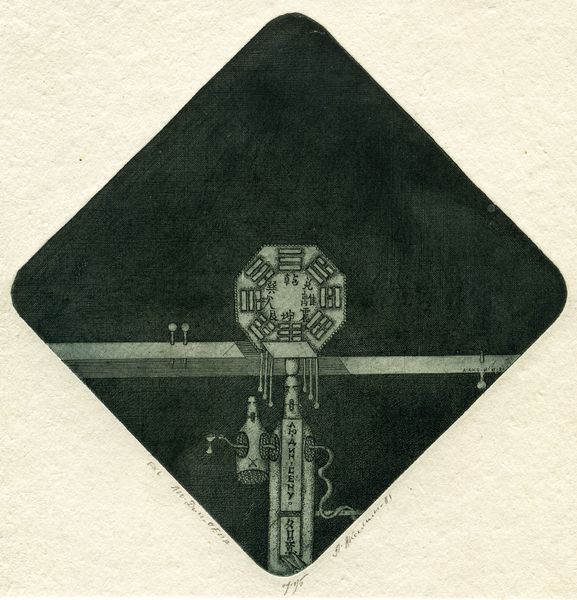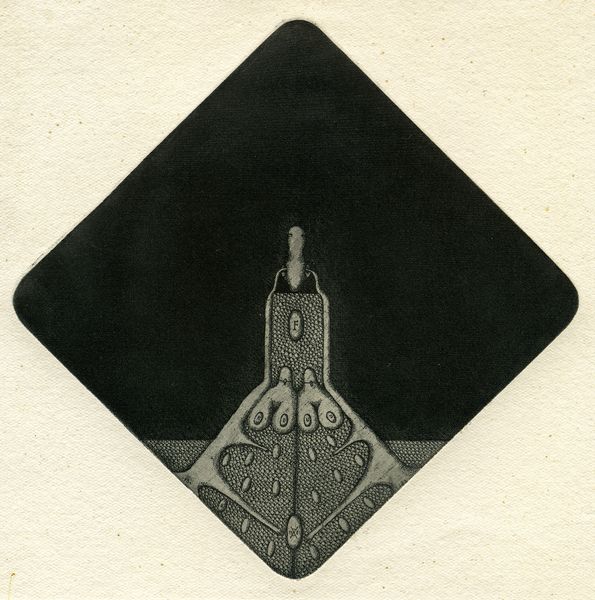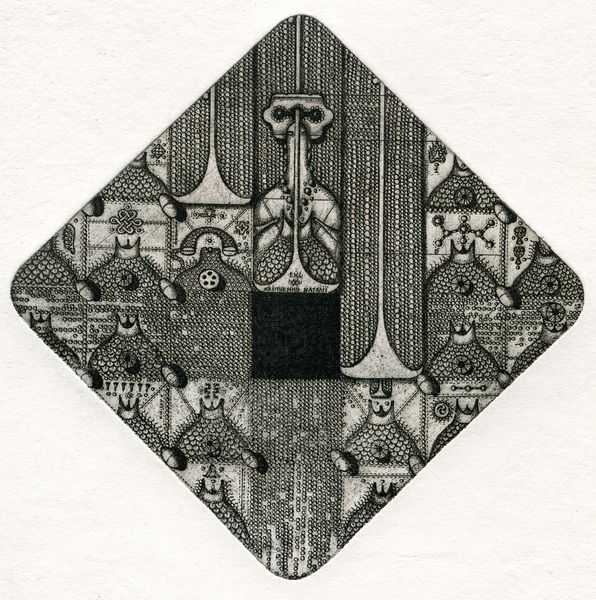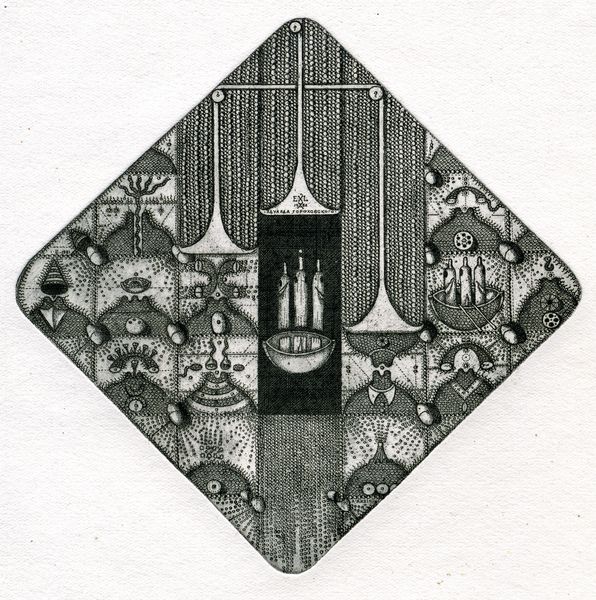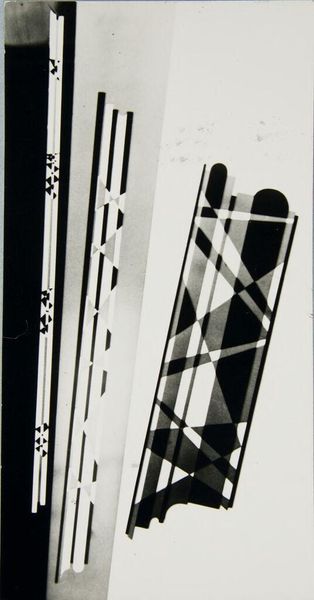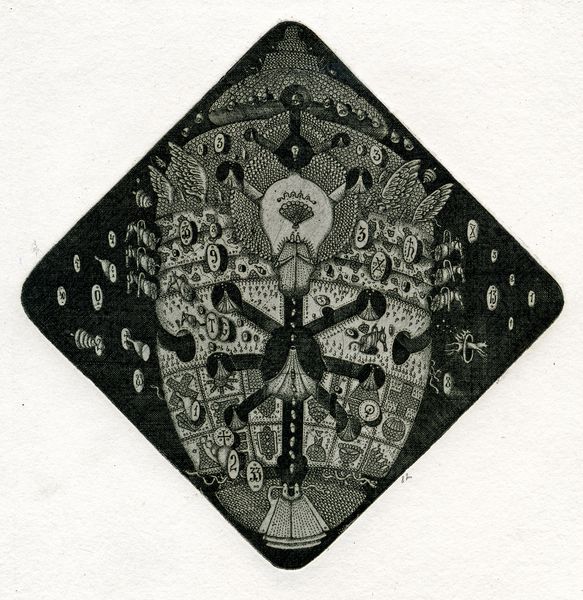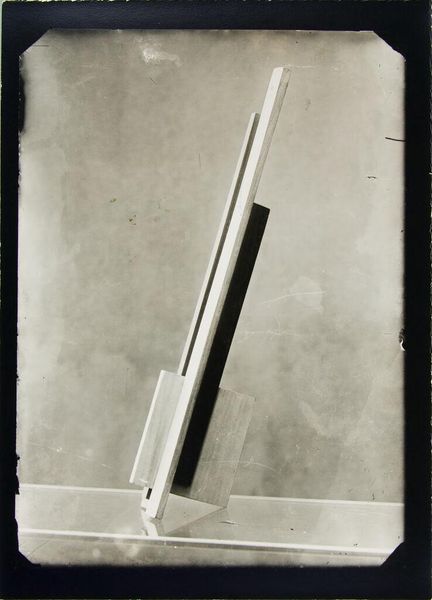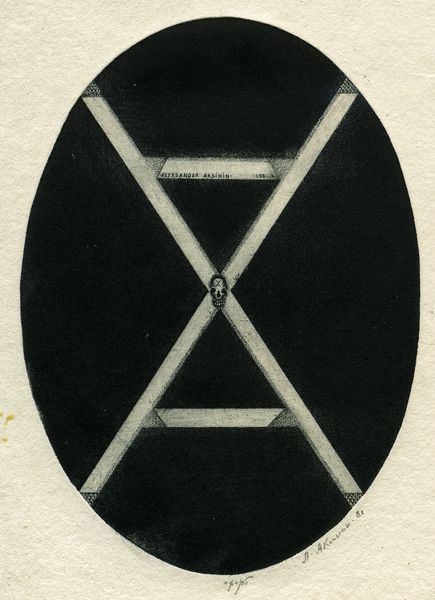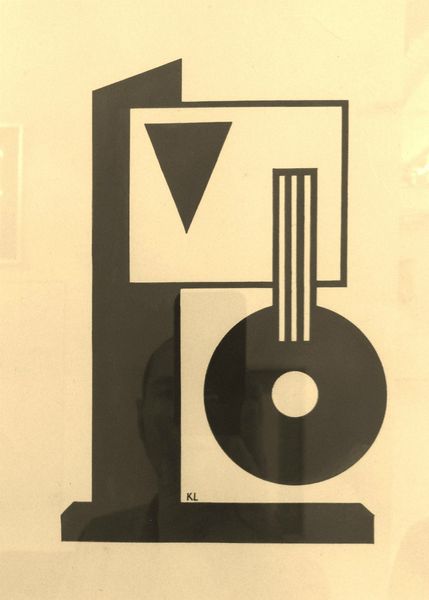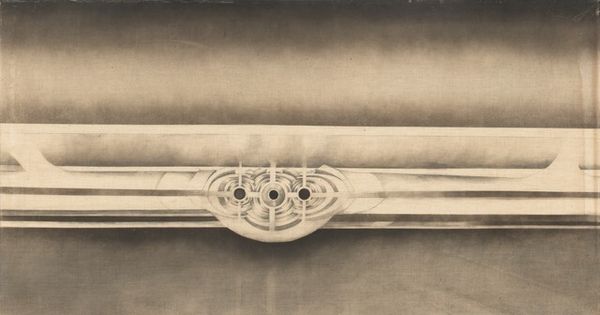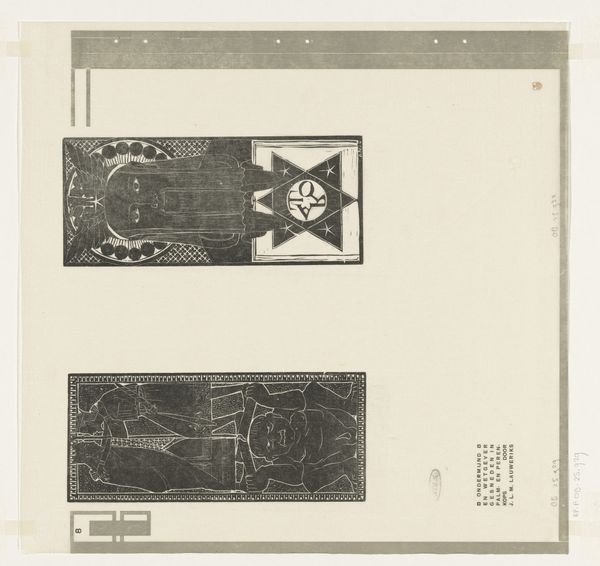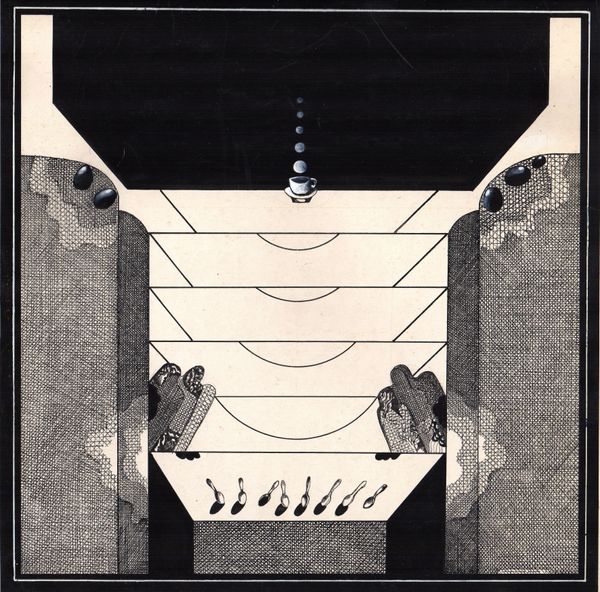
drawing, paper, ink
#
drawing
#
postmodernism
#
paper
#
ink
#
geometric
#
abstraction
#
cityscape
Copyright: Oleksandr Aksinin,Fair Use
Curator: Here we have Oleksandr Aksinin’s “Gospel 1” created in 1984, an ink drawing on paper. Editor: My first impression is one of disorientation. The perspective is skewed, the shapes are simultaneously familiar and alien, creating an almost dreamlike or surreal cityscape. Curator: It's certainly striking, and deliberately so. Aksinin was working in a period when artists were grappling with the rigid constraints imposed on creative expression. He's subverting architectural forms and incorporating surrealist elements to push back against those limitations. This piece exists within the postmodernism art movement. Editor: Right, I'm seeing elements of that now. The geometric abstraction certainly pulls from various "isms," doesn't it? Tell me, in what way do those architectural elements reflect socio-political tension? Curator: Think of Soviet architecture, known for its imposing scale and functionality over aesthetics. Aksinin’s use of geometric shapes could be interpreted as a deconstruction of those ideals. Instead of a straightforward, legible depiction, we have a fragmented, ambiguous space. Also, let’s consider the title itself, “Gospel 1." The term “Gospel” typically suggests faith and unwavering belief. Editor: And by linking that to an unconventional drawing like this, the artist questions our cultural reliance on a fixed dogma and societal truths? Is that where you are going? This feels less about architectural documentation, and more of a metaphor for breaking from societal expectations. This idea is definitely visible when examining those ambiguous, floating figures. Curator: Exactly. The symbolism is multi-layered, but broadly it underscores the value of questioning power structures and thinking for oneself. These concepts resonate particularly in periods of repression, where questioning authority could lead to marginalization. Editor: Thinking about marginalized identities, does Aksinin use symbolism related to his own identity or position in society? This piece seems deliberately abstract and could benefit from an artist’s statement, no? Curator: That's a valuable point. While the symbols are universal in some sense, you are right, they are also likely tinged by his experiences. Aksinin's own experience certainly shaped his artistic practice and fueled his need to express non-conformist views in his art. Editor: Looking at "Gospel 1," I am considering a number of ways societies use images. Thinking specifically about its materiality, I would consider a more detailed visual examination for insight. It could make a profound statement. Curator: Yes, that close looking reveals more about its power. Aksinin’s artistic practice, within its historical and socio-political moment, is deeply compelling and reminds us of art's potential as a tool for reflection.
Comments
No comments
Be the first to comment and join the conversation on the ultimate creative platform.
